#Medieval Bulgarian Coins collection
Explore tagged Tumblr posts
Photo
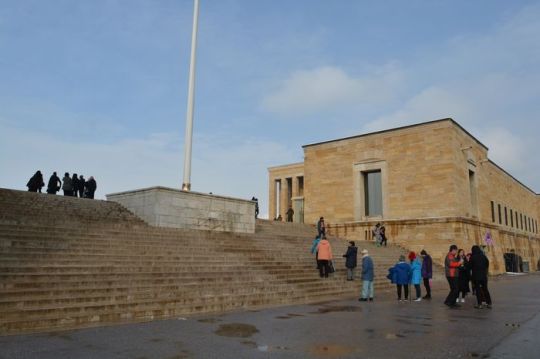
The Iskra Museum of Kazanlak
A Legacy of Patriotism
Established in 1901 by Kazanlak native Petar Topouzov, the Iskra Museum of History stands as one of Bulgaria’s oldest, most extensive, and beloved regional museums.
Rich Cultural Heritage
With over 50,000 original exhibits, the museum showcases the diverse material and spiritual culture of the Kazanlak region. Permanent exhibitions cover Archaeology, National Renaissance, Modern History, Ethnography, and Contemporary History.
Highlights of the Collection
Visitors are drawn to the museum’s impressive collections, including rare bone sickles (unique in Southeast Europe), medieval ceramics, weaponry, firearms, and traditional jewelry and costumes worn by past inhabitants of Kazanlak Private Turkey Tours.
Discoveries from Thracian Tombs
The new treasury hall proudly displays recent discoveries from Thracian tombs in the region, featuring remarkable artifacts such as the golden wreath of Seuthes III, ancient helmets, knee-pieces, horse appliques in gold and silver, and a rare assortment of coins and relics from the Thracian era.
Preserving Cultural Heritage
Dedicated to preserving, researching, and promoting the historic legacy of the Kazanlak region, the museum encompasses all Thracian tombs within the Valley of the Thracian Kings.
Journey Through Time The Ethnographic Complex
Stroll along the romantic cobbled streets of Kulata neighborhood, the oldest part of town, to discover the Ethnographic Complex. Relax in the courtyard with a glass of rose liqueur and preserves, immersing yourself in the serene ambiance of a historic Bulgarian home.
A Glimpse into the Past
Once owned by the Hadjienov family, prominent rose producers, the house now serves as a museum. Explore the primitive rose distillery, known as gyutpana, nestled under the shed. Nearby stands a typical rural house, reflecting the practicality and modesty of the era. The interior furnishings and layout offer insights into the patriarchal grandeur and family unity that once thrived within these walls.
0 notes
Photo
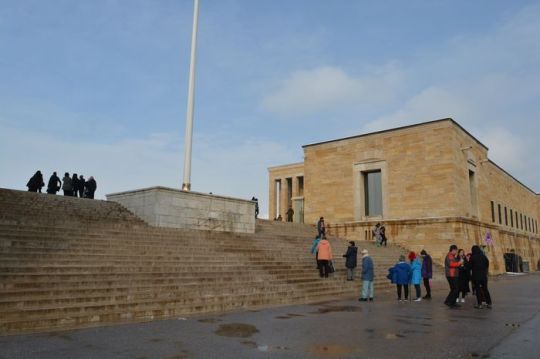
The Iskra Museum of Kazanlak
A Legacy of Patriotism
Established in 1901 by Kazanlak native Petar Topouzov, the Iskra Museum of History stands as one of Bulgaria’s oldest, most extensive, and beloved regional museums.
Rich Cultural Heritage
With over 50,000 original exhibits, the museum showcases the diverse material and spiritual culture of the Kazanlak region. Permanent exhibitions cover Archaeology, National Renaissance, Modern History, Ethnography, and Contemporary History.
Highlights of the Collection
Visitors are drawn to the museum’s impressive collections, including rare bone sickles (unique in Southeast Europe), medieval ceramics, weaponry, firearms, and traditional jewelry and costumes worn by past inhabitants of Kazanlak Private Turkey Tours.
Discoveries from Thracian Tombs
The new treasury hall proudly displays recent discoveries from Thracian tombs in the region, featuring remarkable artifacts such as the golden wreath of Seuthes III, ancient helmets, knee-pieces, horse appliques in gold and silver, and a rare assortment of coins and relics from the Thracian era.
Preserving Cultural Heritage
Dedicated to preserving, researching, and promoting the historic legacy of the Kazanlak region, the museum encompasses all Thracian tombs within the Valley of the Thracian Kings.
Journey Through Time The Ethnographic Complex
Stroll along the romantic cobbled streets of Kulata neighborhood, the oldest part of town, to discover the Ethnographic Complex. Relax in the courtyard with a glass of rose liqueur and preserves, immersing yourself in the serene ambiance of a historic Bulgarian home.
A Glimpse into the Past
Once owned by the Hadjienov family, prominent rose producers, the house now serves as a museum. Explore the primitive rose distillery, known as gyutpana, nestled under the shed. Nearby stands a typical rural house, reflecting the practicality and modesty of the era. The interior furnishings and layout offer insights into the patriarchal grandeur and family unity that once thrived within these walls.
0 notes
Photo
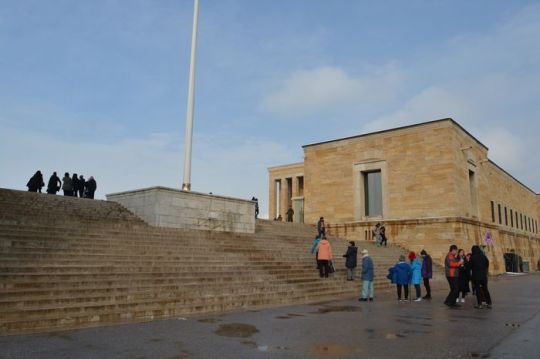
The Iskra Museum of Kazanlak
A Legacy of Patriotism
Established in 1901 by Kazanlak native Petar Topouzov, the Iskra Museum of History stands as one of Bulgaria’s oldest, most extensive, and beloved regional museums.
Rich Cultural Heritage
With over 50,000 original exhibits, the museum showcases the diverse material and spiritual culture of the Kazanlak region. Permanent exhibitions cover Archaeology, National Renaissance, Modern History, Ethnography, and Contemporary History.
Highlights of the Collection
Visitors are drawn to the museum’s impressive collections, including rare bone sickles (unique in Southeast Europe), medieval ceramics, weaponry, firearms, and traditional jewelry and costumes worn by past inhabitants of Kazanlak Private Turkey Tours.
Discoveries from Thracian Tombs
The new treasury hall proudly displays recent discoveries from Thracian tombs in the region, featuring remarkable artifacts such as the golden wreath of Seuthes III, ancient helmets, knee-pieces, horse appliques in gold and silver, and a rare assortment of coins and relics from the Thracian era.
Preserving Cultural Heritage
Dedicated to preserving, researching, and promoting the historic legacy of the Kazanlak region, the museum encompasses all Thracian tombs within the Valley of the Thracian Kings.
Journey Through Time The Ethnographic Complex
Stroll along the romantic cobbled streets of Kulata neighborhood, the oldest part of town, to discover the Ethnographic Complex. Relax in the courtyard with a glass of rose liqueur and preserves, immersing yourself in the serene ambiance of a historic Bulgarian home.
A Glimpse into the Past
Once owned by the Hadjienov family, prominent rose producers, the house now serves as a museum. Explore the primitive rose distillery, known as gyutpana, nestled under the shed. Nearby stands a typical rural house, reflecting the practicality and modesty of the era. The interior furnishings and layout offer insights into the patriarchal grandeur and family unity that once thrived within these walls.
0 notes
Photo
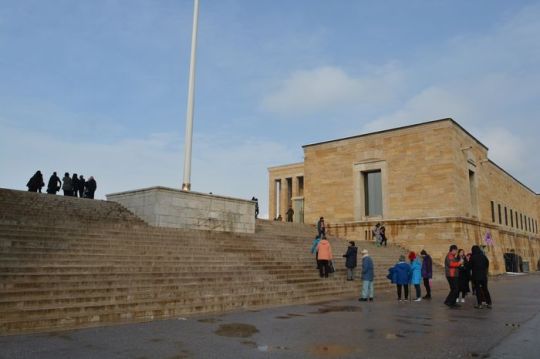
The Iskra Museum of Kazanlak
A Legacy of Patriotism
Established in 1901 by Kazanlak native Petar Topouzov, the Iskra Museum of History stands as one of Bulgaria’s oldest, most extensive, and beloved regional museums.
Rich Cultural Heritage
With over 50,000 original exhibits, the museum showcases the diverse material and spiritual culture of the Kazanlak region. Permanent exhibitions cover Archaeology, National Renaissance, Modern History, Ethnography, and Contemporary History.
Highlights of the Collection
Visitors are drawn to the museum’s impressive collections, including rare bone sickles (unique in Southeast Europe), medieval ceramics, weaponry, firearms, and traditional jewelry and costumes worn by past inhabitants of Kazanlak Private Turkey Tours.
Discoveries from Thracian Tombs
The new treasury hall proudly displays recent discoveries from Thracian tombs in the region, featuring remarkable artifacts such as the golden wreath of Seuthes III, ancient helmets, knee-pieces, horse appliques in gold and silver, and a rare assortment of coins and relics from the Thracian era.
Preserving Cultural Heritage
Dedicated to preserving, researching, and promoting the historic legacy of the Kazanlak region, the museum encompasses all Thracian tombs within the Valley of the Thracian Kings.
Journey Through Time The Ethnographic Complex
Stroll along the romantic cobbled streets of Kulata neighborhood, the oldest part of town, to discover the Ethnographic Complex. Relax in the courtyard with a glass of rose liqueur and preserves, immersing yourself in the serene ambiance of a historic Bulgarian home.
A Glimpse into the Past
Once owned by the Hadjienov family, prominent rose producers, the house now serves as a museum. Explore the primitive rose distillery, known as gyutpana, nestled under the shed. Nearby stands a typical rural house, reflecting the practicality and modesty of the era. The interior furnishings and layout offer insights into the patriarchal grandeur and family unity that once thrived within these walls.
0 notes
Text
Silver Coin of Tsar Mihail Shishman of Second Bulgarian Empire Released by National Bank, Archaeology Museum in Replica Collection
Silver Coin of Tsar Mihail Shishman of Second Bulgarian Empire Released by National Bank, Archaeology Museum in Replica Collection
The replica of the silver coin minted by Tsar Mihail III Shishman Asen in the 1320s, which featured the ruler riding on a horse on its reverse, a standard coin image for the remainder of the life of the Second Blgarian Empire. Photo: National Institute and Museum of Archaeology A replica of a silver coin minted by Tsar Mihail III Shishman Asen of the Second Bulgarian Empire (r. 1323 – 1330) has…
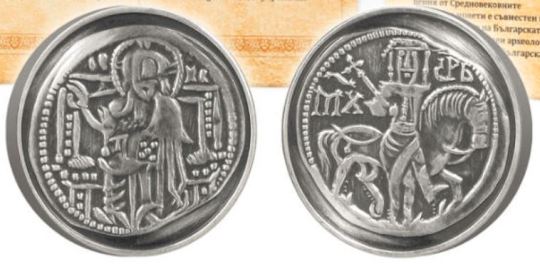
View On WordPress
#Battle of Velbazhd#Bulgarian National Bank#Byzantine Empire#Byzantium#coin#coin minting#coins#copper#copper coin#copper coins#cup-shaped coins#gold#gold coin#gold coins#hyperpyron#King Stefan Uros IV Dusan#Medieval Bulgarian Coins collection#mint#National Institute and Museum of Archaeology#numismatics#numismatist#perpera (gold coin)#replica coin#scyphates#Second Bulgarian Empire#silver#silver coin#silver coins#solidus#Stefan Dusan
2 notes
·
View notes
Photo
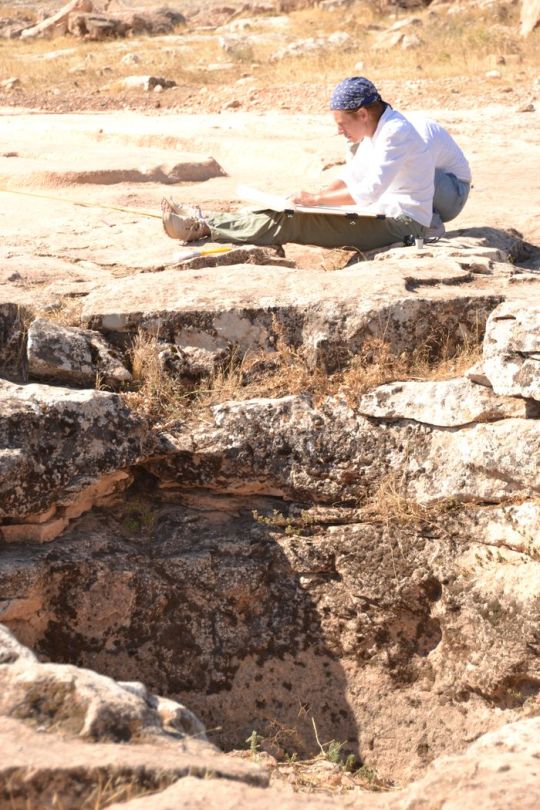
The culture of the Empire
The artistic laboratory comprised the centers in these territories and thus created the culture of the Empire. Teams of architects and skillful man strayed far and wide to meet the requirements of various layers of the society. They employed to many replicas the models produced in the most prominent work-
shops in Byzantium. Rich imperial gifts or perhaps commissions of the Bulgarian aristocrats to the workshops in the Capital city or the major seats of the Empire gave splendour to life.
Veliki Preslav, the Capital city of Bulgaria in the course of less than a century, sensed most vigorously the cultural breath of Byzantium. The entire city was splendid – the buildings, the garments, the table, and the ceremonial adopted also from the Byzantine court. Even the scarce remains of the grandeur reveal the pursuit of reaching the prestige of Byzantium and leveling to it. The workshops for painted ceramics achieved acme, the stone tracery on the walls acquired the impression of chiaroscuro. Within the jewels and everyday objects we find the amalgamation of the Bulgarian vogue and taste, and the artistry and techniques of the Byzantine workshops.
The fabulous Preslav Treasure well illustrates this synthesis. The good fortune has bestowed the idea of the true level of luxury often described by the authors of the 10th century. It alone has survived the plunder – to show us the magnificent enamels and precious stones glowing on the gold of the crown and the necklace or the rest of the exquisite heavy jewels gathered in haste and buried into the ground to reach us and prove the myth. We have also the extraordinary cross – reliquary decorated with images and scenes executed in niello technique. Still another value is the pectoral icon with the image of St. Virgin Mary bulgaria tour.
The significance of all that the Bulgarian collections treasure lies in its origins and its location in territories still covered by Bulgaria as they offer good possibilities for interpretation. This refers to the numerous artifacts of every day standards as well as to the technological inventions or the huge amount of coins and seals.
The artistic heritage and the works associated with the religious practice – liturgical objects, embroideries and painted holy images add a peculiar prestige to this exhibition. Four icons present the assembly of the most remarkable works of the easel painting known from the collections of the Bulgarian museums – the ceramic icon of St. Theodore from Veliki Preslav (10th century) – the only one known of its kind, the outstanding mosaic icon of St. Virgin Mary from Thrace – a precious imperial gift (13th – 14th century), the icon of St. Virgin from Nessebar in silver facing donated by the uncle of the Bulgarian Tsar Ivan Alexander (1342), and the two – sided icon from Poganovo Monastery (14th century), incredible in its artistry. A gallery of painted images from the Church of St. Nicholas in Melnik, and wall paintings from churches and artifacts from the post-Byzantine Age shape the notion of this profound wealth and illustrate the eternal relationship between Bulgaria and Byzantium.
Here we may find the deep sense of the exhibition revealing the nature and the spirits of the Bulgarian Medieval culture.
Margarita Vaklinova
1-FLOOR MOSAIC FROM THE APSE OF ST. SOPHIA CHURCH IN SOFIA (SERDICA)
First half of the 4th century
Opus tesselatum, Opus vermiculatum; tesserae of fine-grain marble with grey and cream-coloured spots, red ferrous quartz, cream-coloured quartz, fine-grain calcareous sandstone, quartz in ochre, blue-greyish dolomite, greenish andesite, glass 2,70 x 2,60 x 0,10 m
Discovered during the archaeological research of St. Sophia Church in 1893, flout 1 m frdoze Oie Zoor. It decorated the apse of the earliest cemetery church in eastern Serdica necropolis.
0 notes
Photo

The culture of the Empire
The artistic laboratory comprised the centers in these territories and thus created the culture of the Empire. Teams of architects and skillful man strayed far and wide to meet the requirements of various layers of the society. They employed to many replicas the models produced in the most prominent work-
shops in Byzantium. Rich imperial gifts or perhaps commissions of the Bulgarian aristocrats to the workshops in the Capital city or the major seats of the Empire gave splendour to life.
Veliki Preslav, the Capital city of Bulgaria in the course of less than a century, sensed most vigorously the cultural breath of Byzantium. The entire city was splendid – the buildings, the garments, the table, and the ceremonial adopted also from the Byzantine court. Even the scarce remains of the grandeur reveal the pursuit of reaching the prestige of Byzantium and leveling to it. The workshops for painted ceramics achieved acme, the stone tracery on the walls acquired the impression of chiaroscuro. Within the jewels and everyday objects we find the amalgamation of the Bulgarian vogue and taste, and the artistry and techniques of the Byzantine workshops.
The fabulous Preslav Treasure well illustrates this synthesis. The good fortune has bestowed the idea of the true level of luxury often described by the authors of the 10th century. It alone has survived the plunder – to show us the magnificent enamels and precious stones glowing on the gold of the crown and the necklace or the rest of the exquisite heavy jewels gathered in haste and buried into the ground to reach us and prove the myth. We have also the extraordinary cross – reliquary decorated with images and scenes executed in niello technique. Still another value is the pectoral icon with the image of St. Virgin Mary bulgaria tour.
The significance of all that the Bulgarian collections treasure lies in its origins and its location in territories still covered by Bulgaria as they offer good possibilities for interpretation. This refers to the numerous artifacts of every day standards as well as to the technological inventions or the huge amount of coins and seals.
The artistic heritage and the works associated with the religious practice – liturgical objects, embroideries and painted holy images add a peculiar prestige to this exhibition. Four icons present the assembly of the most remarkable works of the easel painting known from the collections of the Bulgarian museums – the ceramic icon of St. Theodore from Veliki Preslav (10th century) – the only one known of its kind, the outstanding mosaic icon of St. Virgin Mary from Thrace – a precious imperial gift (13th – 14th century), the icon of St. Virgin from Nessebar in silver facing donated by the uncle of the Bulgarian Tsar Ivan Alexander (1342), and the two – sided icon from Poganovo Monastery (14th century), incredible in its artistry. A gallery of painted images from the Church of St. Nicholas in Melnik, and wall paintings from churches and artifacts from the post-Byzantine Age shape the notion of this profound wealth and illustrate the eternal relationship between Bulgaria and Byzantium.
Here we may find the deep sense of the exhibition revealing the nature and the spirits of the Bulgarian Medieval culture.
Margarita Vaklinova
1-FLOOR MOSAIC FROM THE APSE OF ST. SOPHIA CHURCH IN SOFIA (SERDICA)
First half of the 4th century
Opus tesselatum, Opus vermiculatum; tesserae of fine-grain marble with grey and cream-coloured spots, red ferrous quartz, cream-coloured quartz, fine-grain calcareous sandstone, quartz in ochre, blue-greyish dolomite, greenish andesite, glass 2,70 x 2,60 x 0,10 m
Discovered during the archaeological research of St. Sophia Church in 1893, flout 1 m frdoze Oie Zoor. It decorated the apse of the earliest cemetery church in eastern Serdica necropolis.
0 notes
Photo

The culture of the Empire
The artistic laboratory comprised the centers in these territories and thus created the culture of the Empire. Teams of architects and skillful man strayed far and wide to meet the requirements of various layers of the society. They employed to many replicas the models produced in the most prominent work-
shops in Byzantium. Rich imperial gifts or perhaps commissions of the Bulgarian aristocrats to the workshops in the Capital city or the major seats of the Empire gave splendour to life.
Veliki Preslav, the Capital city of Bulgaria in the course of less than a century, sensed most vigorously the cultural breath of Byzantium. The entire city was splendid – the buildings, the garments, the table, and the ceremonial adopted also from the Byzantine court. Even the scarce remains of the grandeur reveal the pursuit of reaching the prestige of Byzantium and leveling to it. The workshops for painted ceramics achieved acme, the stone tracery on the walls acquired the impression of chiaroscuro. Within the jewels and everyday objects we find the amalgamation of the Bulgarian vogue and taste, and the artistry and techniques of the Byzantine workshops.
The fabulous Preslav Treasure well illustrates this synthesis. The good fortune has bestowed the idea of the true level of luxury often described by the authors of the 10th century. It alone has survived the plunder – to show us the magnificent enamels and precious stones glowing on the gold of the crown and the necklace or the rest of the exquisite heavy jewels gathered in haste and buried into the ground to reach us and prove the myth. We have also the extraordinary cross – reliquary decorated with images and scenes executed in niello technique. Still another value is the pectoral icon with the image of St. Virgin Mary bulgaria tour.
The significance of all that the Bulgarian collections treasure lies in its origins and its location in territories still covered by Bulgaria as they offer good possibilities for interpretation. This refers to the numerous artifacts of every day standards as well as to the technological inventions or the huge amount of coins and seals.
The artistic heritage and the works associated with the religious practice – liturgical objects, embroideries and painted holy images add a peculiar prestige to this exhibition. Four icons present the assembly of the most remarkable works of the easel painting known from the collections of the Bulgarian museums – the ceramic icon of St. Theodore from Veliki Preslav (10th century) – the only one known of its kind, the outstanding mosaic icon of St. Virgin Mary from Thrace – a precious imperial gift (13th – 14th century), the icon of St. Virgin from Nessebar in silver facing donated by the uncle of the Bulgarian Tsar Ivan Alexander (1342), and the two – sided icon from Poganovo Monastery (14th century), incredible in its artistry. A gallery of painted images from the Church of St. Nicholas in Melnik, and wall paintings from churches and artifacts from the post-Byzantine Age shape the notion of this profound wealth and illustrate the eternal relationship between Bulgaria and Byzantium.
Here we may find the deep sense of the exhibition revealing the nature and the spirits of the Bulgarian Medieval culture.
Margarita Vaklinova
1-FLOOR MOSAIC FROM THE APSE OF ST. SOPHIA CHURCH IN SOFIA (SERDICA)
First half of the 4th century
Opus tesselatum, Opus vermiculatum; tesserae of fine-grain marble with grey and cream-coloured spots, red ferrous quartz, cream-coloured quartz, fine-grain calcareous sandstone, quartz in ochre, blue-greyish dolomite, greenish andesite, glass 2,70 x 2,60 x 0,10 m
Discovered during the archaeological research of St. Sophia Church in 1893, flout 1 m frdoze Oie Zoor. It decorated the apse of the earliest cemetery church in eastern Serdica necropolis.
0 notes
Photo

The culture of the Empire
The artistic laboratory comprised the centers in these territories and thus created the culture of the Empire. Teams of architects and skillful man strayed far and wide to meet the requirements of various layers of the society. They employed to many replicas the models produced in the most prominent work-
shops in Byzantium. Rich imperial gifts or perhaps commissions of the Bulgarian aristocrats to the workshops in the Capital city or the major seats of the Empire gave splendour to life.
Veliki Preslav, the Capital city of Bulgaria in the course of less than a century, sensed most vigorously the cultural breath of Byzantium. The entire city was splendid – the buildings, the garments, the table, and the ceremonial adopted also from the Byzantine court. Even the scarce remains of the grandeur reveal the pursuit of reaching the prestige of Byzantium and leveling to it. The workshops for painted ceramics achieved acme, the stone tracery on the walls acquired the impression of chiaroscuro. Within the jewels and everyday objects we find the amalgamation of the Bulgarian vogue and taste, and the artistry and techniques of the Byzantine workshops.
The fabulous Preslav Treasure well illustrates this synthesis. The good fortune has bestowed the idea of the true level of luxury often described by the authors of the 10th century. It alone has survived the plunder – to show us the magnificent enamels and precious stones glowing on the gold of the crown and the necklace or the rest of the exquisite heavy jewels gathered in haste and buried into the ground to reach us and prove the myth. We have also the extraordinary cross – reliquary decorated with images and scenes executed in niello technique. Still another value is the pectoral icon with the image of St. Virgin Mary bulgaria tour.
The significance of all that the Bulgarian collections treasure lies in its origins and its location in territories still covered by Bulgaria as they offer good possibilities for interpretation. This refers to the numerous artifacts of every day standards as well as to the technological inventions or the huge amount of coins and seals.
The artistic heritage and the works associated with the religious practice – liturgical objects, embroideries and painted holy images add a peculiar prestige to this exhibition. Four icons present the assembly of the most remarkable works of the easel painting known from the collections of the Bulgarian museums – the ceramic icon of St. Theodore from Veliki Preslav (10th century) – the only one known of its kind, the outstanding mosaic icon of St. Virgin Mary from Thrace – a precious imperial gift (13th – 14th century), the icon of St. Virgin from Nessebar in silver facing donated by the uncle of the Bulgarian Tsar Ivan Alexander (1342), and the two – sided icon from Poganovo Monastery (14th century), incredible in its artistry. A gallery of painted images from the Church of St. Nicholas in Melnik, and wall paintings from churches and artifacts from the post-Byzantine Age shape the notion of this profound wealth and illustrate the eternal relationship between Bulgaria and Byzantium.
Here we may find the deep sense of the exhibition revealing the nature and the spirits of the Bulgarian Medieval culture.
Margarita Vaklinova
1-FLOOR MOSAIC FROM THE APSE OF ST. SOPHIA CHURCH IN SOFIA (SERDICA)
First half of the 4th century
Opus tesselatum, Opus vermiculatum; tesserae of fine-grain marble with grey and cream-coloured spots, red ferrous quartz, cream-coloured quartz, fine-grain calcareous sandstone, quartz in ochre, blue-greyish dolomite, greenish andesite, glass 2,70 x 2,60 x 0,10 m
Discovered during the archaeological research of St. Sophia Church in 1893, flout 1 m frdoze Oie Zoor. It decorated the apse of the earliest cemetery church in eastern Serdica necropolis.
0 notes
Photo

The culture of the Empire
The artistic laboratory comprised the centers in these territories and thus created the culture of the Empire. Teams of architects and skillful man strayed far and wide to meet the requirements of various layers of the society. They employed to many replicas the models produced in the most prominent work-
shops in Byzantium. Rich imperial gifts or perhaps commissions of the Bulgarian aristocrats to the workshops in the Capital city or the major seats of the Empire gave splendour to life.
Veliki Preslav, the Capital city of Bulgaria in the course of less than a century, sensed most vigorously the cultural breath of Byzantium. The entire city was splendid – the buildings, the garments, the table, and the ceremonial adopted also from the Byzantine court. Even the scarce remains of the grandeur reveal the pursuit of reaching the prestige of Byzantium and leveling to it. The workshops for painted ceramics achieved acme, the stone tracery on the walls acquired the impression of chiaroscuro. Within the jewels and everyday objects we find the amalgamation of the Bulgarian vogue and taste, and the artistry and techniques of the Byzantine workshops.
The fabulous Preslav Treasure well illustrates this synthesis. The good fortune has bestowed the idea of the true level of luxury often described by the authors of the 10th century. It alone has survived the plunder – to show us the magnificent enamels and precious stones glowing on the gold of the crown and the necklace or the rest of the exquisite heavy jewels gathered in haste and buried into the ground to reach us and prove the myth. We have also the extraordinary cross – reliquary decorated with images and scenes executed in niello technique. Still another value is the pectoral icon with the image of St. Virgin Mary bulgaria tour.
The significance of all that the Bulgarian collections treasure lies in its origins and its location in territories still covered by Bulgaria as they offer good possibilities for interpretation. This refers to the numerous artifacts of every day standards as well as to the technological inventions or the huge amount of coins and seals.
The artistic heritage and the works associated with the religious practice – liturgical objects, embroideries and painted holy images add a peculiar prestige to this exhibition. Four icons present the assembly of the most remarkable works of the easel painting known from the collections of the Bulgarian museums – the ceramic icon of St. Theodore from Veliki Preslav (10th century) – the only one known of its kind, the outstanding mosaic icon of St. Virgin Mary from Thrace – a precious imperial gift (13th – 14th century), the icon of St. Virgin from Nessebar in silver facing donated by the uncle of the Bulgarian Tsar Ivan Alexander (1342), and the two – sided icon from Poganovo Monastery (14th century), incredible in its artistry. A gallery of painted images from the Church of St. Nicholas in Melnik, and wall paintings from churches and artifacts from the post-Byzantine Age shape the notion of this profound wealth and illustrate the eternal relationship between Bulgaria and Byzantium.
Here we may find the deep sense of the exhibition revealing the nature and the spirits of the Bulgarian Medieval culture.
Margarita Vaklinova
1-FLOOR MOSAIC FROM THE APSE OF ST. SOPHIA CHURCH IN SOFIA (SERDICA)
First half of the 4th century
Opus tesselatum, Opus vermiculatum; tesserae of fine-grain marble with grey and cream-coloured spots, red ferrous quartz, cream-coloured quartz, fine-grain calcareous sandstone, quartz in ochre, blue-greyish dolomite, greenish andesite, glass 2,70 x 2,60 x 0,10 m
Discovered during the archaeological research of St. Sophia Church in 1893, flout 1 m frdoze Oie Zoor. It decorated the apse of the earliest cemetery church in eastern Serdica necropolis.
0 notes
Photo

The culture of the Empire
The artistic laboratory comprised the centers in these territories and thus created the culture of the Empire. Teams of architects and skillful man strayed far and wide to meet the requirements of various layers of the society. They employed to many replicas the models produced in the most prominent work-
shops in Byzantium. Rich imperial gifts or perhaps commissions of the Bulgarian aristocrats to the workshops in the Capital city or the major seats of the Empire gave splendour to life.
Veliki Preslav, the Capital city of Bulgaria in the course of less than a century, sensed most vigorously the cultural breath of Byzantium. The entire city was splendid – the buildings, the garments, the table, and the ceremonial adopted also from the Byzantine court. Even the scarce remains of the grandeur reveal the pursuit of reaching the prestige of Byzantium and leveling to it. The workshops for painted ceramics achieved acme, the stone tracery on the walls acquired the impression of chiaroscuro. Within the jewels and everyday objects we find the amalgamation of the Bulgarian vogue and taste, and the artistry and techniques of the Byzantine workshops.
The fabulous Preslav Treasure well illustrates this synthesis. The good fortune has bestowed the idea of the true level of luxury often described by the authors of the 10th century. It alone has survived the plunder – to show us the magnificent enamels and precious stones glowing on the gold of the crown and the necklace or the rest of the exquisite heavy jewels gathered in haste and buried into the ground to reach us and prove the myth. We have also the extraordinary cross – reliquary decorated with images and scenes executed in niello technique. Still another value is the pectoral icon with the image of St. Virgin Mary bulgaria tour.
The significance of all that the Bulgarian collections treasure lies in its origins and its location in territories still covered by Bulgaria as they offer good possibilities for interpretation. This refers to the numerous artifacts of every day standards as well as to the technological inventions or the huge amount of coins and seals.
The artistic heritage and the works associated with the religious practice – liturgical objects, embroideries and painted holy images add a peculiar prestige to this exhibition. Four icons present the assembly of the most remarkable works of the easel painting known from the collections of the Bulgarian museums – the ceramic icon of St. Theodore from Veliki Preslav (10th century) – the only one known of its kind, the outstanding mosaic icon of St. Virgin Mary from Thrace – a precious imperial gift (13th – 14th century), the icon of St. Virgin from Nessebar in silver facing donated by the uncle of the Bulgarian Tsar Ivan Alexander (1342), and the two – sided icon from Poganovo Monastery (14th century), incredible in its artistry. A gallery of painted images from the Church of St. Nicholas in Melnik, and wall paintings from churches and artifacts from the post-Byzantine Age shape the notion of this profound wealth and illustrate the eternal relationship between Bulgaria and Byzantium.
Here we may find the deep sense of the exhibition revealing the nature and the spirits of the Bulgarian Medieval culture.
Margarita Vaklinova
1-FLOOR MOSAIC FROM THE APSE OF ST. SOPHIA CHURCH IN SOFIA (SERDICA)
First half of the 4th century
Opus tesselatum, Opus vermiculatum; tesserae of fine-grain marble with grey and cream-coloured spots, red ferrous quartz, cream-coloured quartz, fine-grain calcareous sandstone, quartz in ochre, blue-greyish dolomite, greenish andesite, glass 2,70 x 2,60 x 0,10 m
Discovered during the archaeological research of St. Sophia Church in 1893, flout 1 m frdoze Oie Zoor. It decorated the apse of the earliest cemetery church in eastern Serdica necropolis.
0 notes
Photo
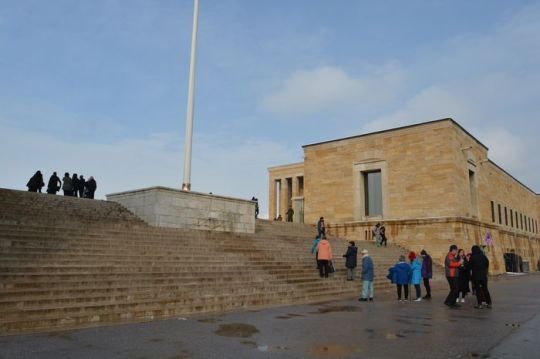
The Iskra Museum of Kazanlak
A Legacy of Patriotism
Established in 1901 by Kazanlak native Petar Topouzov, the Iskra Museum of History stands as one of Bulgaria’s oldest, most extensive, and beloved regional museums.
Rich Cultural Heritage
With over 50,000 original exhibits, the museum showcases the diverse material and spiritual culture of the Kazanlak region. Permanent exhibitions cover Archaeology, National Renaissance, Modern History, Ethnography, and Contemporary History.
Highlights of the Collection
Visitors are drawn to the museum’s impressive collections, including rare bone sickles (unique in Southeast Europe), medieval ceramics, weaponry, firearms, and traditional jewelry and costumes worn by past inhabitants of Kazanlak Private Turkey Tours.
Discoveries from Thracian Tombs
The new treasury hall proudly displays recent discoveries from Thracian tombs in the region, featuring remarkable artifacts such as the golden wreath of Seuthes III, ancient helmets, knee-pieces, horse appliques in gold and silver, and a rare assortment of coins and relics from the Thracian era.
Preserving Cultural Heritage
Dedicated to preserving, researching, and promoting the historic legacy of the Kazanlak region, the museum encompasses all Thracian tombs within the Valley of the Thracian Kings.
Journey Through Time The Ethnographic Complex
Stroll along the romantic cobbled streets of Kulata neighborhood, the oldest part of town, to discover the Ethnographic Complex. Relax in the courtyard with a glass of rose liqueur and preserves, immersing yourself in the serene ambiance of a historic Bulgarian home.
A Glimpse into the Past
Once owned by the Hadjienov family, prominent rose producers, the house now serves as a museum. Explore the primitive rose distillery, known as gyutpana, nestled under the shed. Nearby stands a typical rural house, reflecting the practicality and modesty of the era. The interior furnishings and layout offer insights into the patriarchal grandeur and family unity that once thrived within these walls.
0 notes
Photo

The culture of the Empire
The artistic laboratory comprised the centers in these territories and thus created the culture of the Empire. Teams of architects and skillful man strayed far and wide to meet the requirements of various layers of the society. They employed to many replicas the models produced in the most prominent work-
shops in Byzantium. Rich imperial gifts or perhaps commissions of the Bulgarian aristocrats to the workshops in the Capital city or the major seats of the Empire gave splendour to life.
Veliki Preslav, the Capital city of Bulgaria in the course of less than a century, sensed most vigorously the cultural breath of Byzantium. The entire city was splendid – the buildings, the garments, the table, and the ceremonial adopted also from the Byzantine court. Even the scarce remains of the grandeur reveal the pursuit of reaching the prestige of Byzantium and leveling to it. The workshops for painted ceramics achieved acme, the stone tracery on the walls acquired the impression of chiaroscuro. Within the jewels and everyday objects we find the amalgamation of the Bulgarian vogue and taste, and the artistry and techniques of the Byzantine workshops.
The fabulous Preslav Treasure well illustrates this synthesis. The good fortune has bestowed the idea of the true level of luxury often described by the authors of the 10th century. It alone has survived the plunder – to show us the magnificent enamels and precious stones glowing on the gold of the crown and the necklace or the rest of the exquisite heavy jewels gathered in haste and buried into the ground to reach us and prove the myth. We have also the extraordinary cross – reliquary decorated with images and scenes executed in niello technique. Still another value is the pectoral icon with the image of St. Virgin Mary bulgaria tour.
The significance of all that the Bulgarian collections treasure lies in its origins and its location in territories still covered by Bulgaria as they offer good possibilities for interpretation. This refers to the numerous artifacts of every day standards as well as to the technological inventions or the huge amount of coins and seals.
The artistic heritage and the works associated with the religious practice – liturgical objects, embroideries and painted holy images add a peculiar prestige to this exhibition. Four icons present the assembly of the most remarkable works of the easel painting known from the collections of the Bulgarian museums – the ceramic icon of St. Theodore from Veliki Preslav (10th century) – the only one known of its kind, the outstanding mosaic icon of St. Virgin Mary from Thrace – a precious imperial gift (13th – 14th century), the icon of St. Virgin from Nessebar in silver facing donated by the uncle of the Bulgarian Tsar Ivan Alexander (1342), and the two – sided icon from Poganovo Monastery (14th century), incredible in its artistry. A gallery of painted images from the Church of St. Nicholas in Melnik, and wall paintings from churches and artifacts from the post-Byzantine Age shape the notion of this profound wealth and illustrate the eternal relationship between Bulgaria and Byzantium.
Here we may find the deep sense of the exhibition revealing the nature and the spirits of the Bulgarian Medieval culture.
Margarita Vaklinova
1-FLOOR MOSAIC FROM THE APSE OF ST. SOPHIA CHURCH IN SOFIA (SERDICA)
First half of the 4th century
Opus tesselatum, Opus vermiculatum; tesserae of fine-grain marble with grey and cream-coloured spots, red ferrous quartz, cream-coloured quartz, fine-grain calcareous sandstone, quartz in ochre, blue-greyish dolomite, greenish andesite, glass 2,70 x 2,60 x 0,10 m
Discovered during the archaeological research of St. Sophia Church in 1893, flout 1 m frdoze Oie Zoor. It decorated the apse of the earliest cemetery church in eastern Serdica necropolis.
0 notes
Photo

The culture of the Empire
The artistic laboratory comprised the centers in these territories and thus created the culture of the Empire. Teams of architects and skillful man strayed far and wide to meet the requirements of various layers of the society. They employed to many replicas the models produced in the most prominent work-
shops in Byzantium. Rich imperial gifts or perhaps commissions of the Bulgarian aristocrats to the workshops in the Capital city or the major seats of the Empire gave splendour to life.
Veliki Preslav, the Capital city of Bulgaria in the course of less than a century, sensed most vigorously the cultural breath of Byzantium. The entire city was splendid – the buildings, the garments, the table, and the ceremonial adopted also from the Byzantine court. Even the scarce remains of the grandeur reveal the pursuit of reaching the prestige of Byzantium and leveling to it. The workshops for painted ceramics achieved acme, the stone tracery on the walls acquired the impression of chiaroscuro. Within the jewels and everyday objects we find the amalgamation of the Bulgarian vogue and taste, and the artistry and techniques of the Byzantine workshops.
The fabulous Preslav Treasure well illustrates this synthesis. The good fortune has bestowed the idea of the true level of luxury often described by the authors of the 10th century. It alone has survived the plunder – to show us the magnificent enamels and precious stones glowing on the gold of the crown and the necklace or the rest of the exquisite heavy jewels gathered in haste and buried into the ground to reach us and prove the myth. We have also the extraordinary cross – reliquary decorated with images and scenes executed in niello technique. Still another value is the pectoral icon with the image of St. Virgin Mary bulgaria tour.
The significance of all that the Bulgarian collections treasure lies in its origins and its location in territories still covered by Bulgaria as they offer good possibilities for interpretation. This refers to the numerous artifacts of every day standards as well as to the technological inventions or the huge amount of coins and seals.
The artistic heritage and the works associated with the religious practice – liturgical objects, embroideries and painted holy images add a peculiar prestige to this exhibition. Four icons present the assembly of the most remarkable works of the easel painting known from the collections of the Bulgarian museums – the ceramic icon of St. Theodore from Veliki Preslav (10th century) – the only one known of its kind, the outstanding mosaic icon of St. Virgin Mary from Thrace – a precious imperial gift (13th – 14th century), the icon of St. Virgin from Nessebar in silver facing donated by the uncle of the Bulgarian Tsar Ivan Alexander (1342), and the two – sided icon from Poganovo Monastery (14th century), incredible in its artistry. A gallery of painted images from the Church of St. Nicholas in Melnik, and wall paintings from churches and artifacts from the post-Byzantine Age shape the notion of this profound wealth and illustrate the eternal relationship between Bulgaria and Byzantium.
Here we may find the deep sense of the exhibition revealing the nature and the spirits of the Bulgarian Medieval culture.
Margarita Vaklinova
1-FLOOR MOSAIC FROM THE APSE OF ST. SOPHIA CHURCH IN SOFIA (SERDICA)
First half of the 4th century
Opus tesselatum, Opus vermiculatum; tesserae of fine-grain marble with grey and cream-coloured spots, red ferrous quartz, cream-coloured quartz, fine-grain calcareous sandstone, quartz in ochre, blue-greyish dolomite, greenish andesite, glass 2,70 x 2,60 x 0,10 m
Discovered during the archaeological research of St. Sophia Church in 1893, flout 1 m frdoze Oie Zoor. It decorated the apse of the earliest cemetery church in eastern Serdica necropolis.
0 notes
Photo
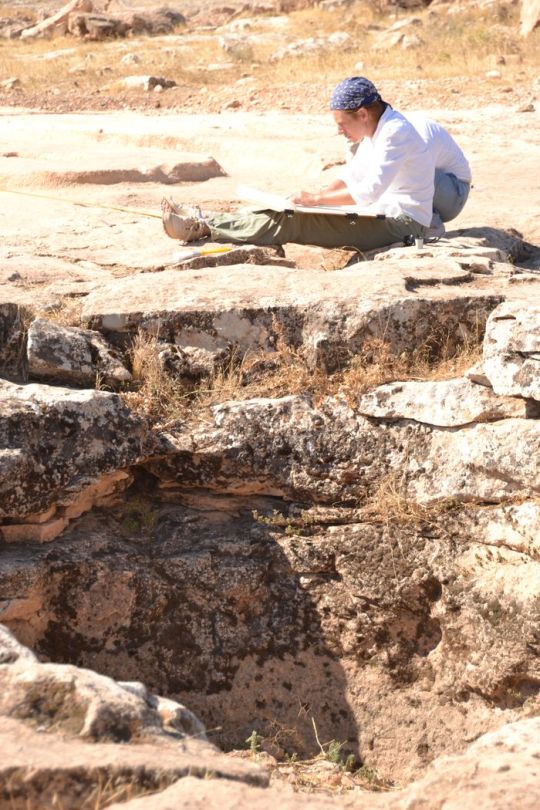
The culture of the Empire
The artistic laboratory comprised the centers in these territories and thus created the culture of the Empire. Teams of architects and skillful man strayed far and wide to meet the requirements of various layers of the society. They employed to many replicas the models produced in the most prominent work-
shops in Byzantium. Rich imperial gifts or perhaps commissions of the Bulgarian aristocrats to the workshops in the Capital city or the major seats of the Empire gave splendour to life.
Veliki Preslav, the Capital city of Bulgaria in the course of less than a century, sensed most vigorously the cultural breath of Byzantium. The entire city was splendid – the buildings, the garments, the table, and the ceremonial adopted also from the Byzantine court. Even the scarce remains of the grandeur reveal the pursuit of reaching the prestige of Byzantium and leveling to it. The workshops for painted ceramics achieved acme, the stone tracery on the walls acquired the impression of chiaroscuro. Within the jewels and everyday objects we find the amalgamation of the Bulgarian vogue and taste, and the artistry and techniques of the Byzantine workshops.
The fabulous Preslav Treasure well illustrates this synthesis. The good fortune has bestowed the idea of the true level of luxury often described by the authors of the 10th century. It alone has survived the plunder – to show us the magnificent enamels and precious stones glowing on the gold of the crown and the necklace or the rest of the exquisite heavy jewels gathered in haste and buried into the ground to reach us and prove the myth. We have also the extraordinary cross – reliquary decorated with images and scenes executed in niello technique. Still another value is the pectoral icon with the image of St. Virgin Mary bulgaria tour.
The significance of all that the Bulgarian collections treasure lies in its origins and its location in territories still covered by Bulgaria as they offer good possibilities for interpretation. This refers to the numerous artifacts of every day standards as well as to the technological inventions or the huge amount of coins and seals.
The artistic heritage and the works associated with the religious practice – liturgical objects, embroideries and painted holy images add a peculiar prestige to this exhibition. Four icons present the assembly of the most remarkable works of the easel painting known from the collections of the Bulgarian museums – the ceramic icon of St. Theodore from Veliki Preslav (10th century) – the only one known of its kind, the outstanding mosaic icon of St. Virgin Mary from Thrace – a precious imperial gift (13th – 14th century), the icon of St. Virgin from Nessebar in silver facing donated by the uncle of the Bulgarian Tsar Ivan Alexander (1342), and the two – sided icon from Poganovo Monastery (14th century), incredible in its artistry. A gallery of painted images from the Church of St. Nicholas in Melnik, and wall paintings from churches and artifacts from the post-Byzantine Age shape the notion of this profound wealth and illustrate the eternal relationship between Bulgaria and Byzantium.
Here we may find the deep sense of the exhibition revealing the nature and the spirits of the Bulgarian Medieval culture.
Margarita Vaklinova
1-FLOOR MOSAIC FROM THE APSE OF ST. SOPHIA CHURCH IN SOFIA (SERDICA)
First half of the 4th century
Opus tesselatum, Opus vermiculatum; tesserae of fine-grain marble with grey and cream-coloured spots, red ferrous quartz, cream-coloured quartz, fine-grain calcareous sandstone, quartz in ochre, blue-greyish dolomite, greenish andesite, glass 2,70 x 2,60 x 0,10 m
Discovered during the archaeological research of St. Sophia Church in 1893, flout 1 m frdoze Oie Zoor. It decorated the apse of the earliest cemetery church in eastern Serdica necropolis.
0 notes
Text
Gold Coin of Tsar Ivan Asen II of Second Bulgarian Empire Released by Bulgarian National Bank, Archaeology Museum as Part of Replica Collection
Gold Coin of Tsar Ivan Asen II of Second Bulgarian Empire Released by Bulgarian National Bank, Archaeology Museum as Part of Replica Collection
The replica of the 1230s gold coin (perpera) of Tsar Ivan Asen II of the Second Bulgarian Empire which is released now with an official booklet by the Bulgarian National Bank and the National Institute and Museum of Archaeology as part of the Bulgarian Medieval Coins replica collection. Photo: National Institute and Museum of Archaeology A replica collection of coins minted by the Tsars of the…

View On WordPress
#Asen Dynasty#Battle of Klokotnitsa#Bulgarian National Bank#Byzantine Empire#Byzantium#coin#coin minting#coins#Constantinople#crusaders#Despot Theodore Komnenos Doukas#Despotate of Epirus#gold coin#gold coins#Holy Forty Martyrs Church in Veliko Tarnovo#House of Asen#hyperpyron#Latin Empire#Medieval Bulgarian Coins collection#mint#National Institute and Museum of Archaeology#Nicaean Empire#perpera (gold coin)#replica coin#Second Bulgarian Empire#solidus#Tarnovgrad#Thessaloniki#Tsar Asen I#Tsar Ivan Asen II
2 notes
·
View notes